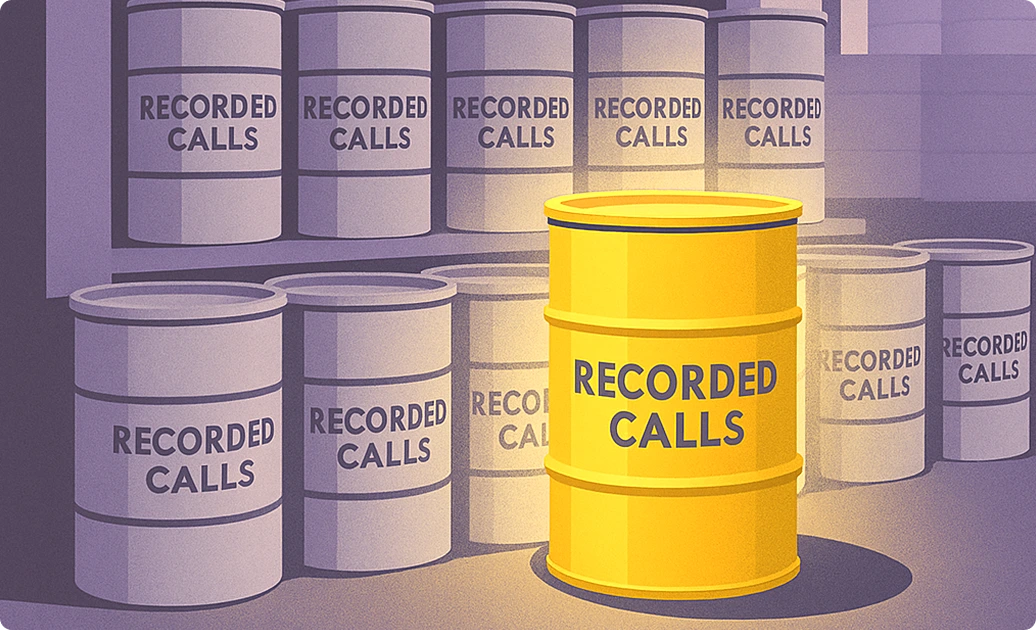Monthly Call Center QA Performance Report Template
-
Bella Williams
- 10 min read
A Monthly Call Center QA Performance Report Template is an essential tool for any call center striving to optimize service quality, agent performance, and customer satisfaction. If you’re looking to craft insightful and actionable call center quality assurance report templates, this comprehensive blog post will guide you through each critical component of a well-structured QA report, informed by best practices and proven frameworks.
What is a Call Center Quality Assurance Report Template?
A call center quality assurance (QA) report template is a standardized document used to evaluate and track the quality of customer interactions within a call center. It helps identify strengths, expose weaknesses, and drive continuous improvement in agent performance and customer experience. By leveraging QA metrics, KPIs, and qualitative insights, managers can make informed decisions, align teams with company standards, and enhance operational efficiency.
Why Use a Monthly Call Center QA Performance Report?
Monthly QA reports provide a recurring, structured snapshot of performance that enables timely course corrections, strategic training, and resource allocation. When properly designed, monthly QA reports:
- Translate raw data into meaningful insights
- Highlight clear improvement opportunities
- Motivate agents through recognition and constructive feedback
- Support compliance with regulatory and internal standards
- Align service delivery with evolving customer expectations
Step-by-Step Guide to Building the Template
Building your Monthly Call Center QA Performance Report Template is a crucial step toward enhancing your operations. Start by identifying key metrics that matter most to your call center. These may include customer satisfaction scores, resolution times, and adherence to scripts. Focusing on these parameters ensures that the report provides actionable insights into performance.
Step 1: Data Collection and Analysis
In Step 1: Data Collection and Analysis, the foundation of an effective Monthly Call Center QA Performance Report is laid. Begin by gathering all relevant data, including call transcripts, customer feedback, and performance metrics. This data not only highlights individual agent performance but also reveals trends across multiple calls. To effectively analyze this information, create a structured project for each month, allowing you to identify patterns, insights, and recurring pain points.
After data collection, focus on analyzing the information critically. Look for common themes and issues that emerge from the calls, as this helps in understanding customer concerns. By summarizing these insights, you create a clearer picture of overall QA performance. This analytical approach enables you to generate a comprehensive report, which can be adjusted as needed. Ultimately, the effectiveness of your QA Performance Template heavily relies on a robust data collection and analysis process to guide call center improvements.
Discuss strategies for gathering and analyzing relevant data for the QA Performance Template.
Gathering and analyzing relevant data for the QA Performance Template involves a systematic approach to ensure clarity and effectiveness. Start by collecting data from various sources, such as call recordings, customer feedback, and performance metrics. This diverse data set provides a comprehensive view of agent performance. Using voice analytics tools can significantly enhance data collection, allowing for real-time insights and trends.
Once data is gathered, the next step is analysis. Implement qualitative and quantitative methods to evaluate performance against established criteria. For instance, review call transcripts against compliance templates to identify strengths and areas for improvement. By focusing on key performance indicators (KPIs), you can extract actionable insights that drive agent training and development. Ultimately, this structured approach ensures that the QA Performance Template not only highlights performance gaps but also fosters a culture of continuous improvement within the call center.
Step 2: Structuring the Report
In structuring a Monthly Call Center QA Performance Report Template, clarity and organization are paramount. Begin with a designated section for key metrics, providing a snapshot of performance indicators such as call resolution rates and customer satisfaction scores. Following the metrics, include a summary that contextualizes the data, enabling quick insights for stakeholders. This structured format promotes readability and helps in driving actionable decisions.
Next, consider incorporating sections dedicated to strengths and opportunities for improvement. Clearly outlining these aspects empowers team leaders to identify training needs and recognize high-performing agents. Ensure that the report transitions smoothly from one section to another, fostering a narrative that guides the reader through the data. By focusing on a logical flow, the QA performance template can transform complex data into a story that highlights both successes and areas for growth, ultimately enhancing call center efficiency.
Explain how to organize and structure the report for clarity and effectiveness.
To achieve clarity and effectiveness in the Monthly Call Center QA Performance Report Template, structure your report logically. Begin with an introduction that highlights the report’s purpose, offering context for your findings. The following sections should methodically cover key metrics, data trends, and analysis insights. Organizing the report into clearly labeled sections helps readers quickly navigate through the information.
Next, ensure that each section includes concise headings and subheadings, guiding readers through your narrative smoothly. Include visuals, such as charts or graphs, to represent data efficiently. This visual representation can enhance comprehension, emphasizing significant points. Finally, conclude with actionable recommendations and a summary of your insights. This structured approach fosters understanding and aids stakeholders in making informed decisions based on the QA Performance Template, ultimately driving continuous improvement.
Key Sections of an Effective Monthly Call Center QA Performance Report Template
Below is an in-depth outline of the 13 sections your report template should include, accompanied by explanations to ensure it serves both operational clarity and strategic purpose.
1. Executive Summary
Start with a concise high-level summary capturing the month’s QA outcomes. Highlight major achievements, critical concerns, and action items for managerial focus.
2. Call Volume & QA Sample Size
Report total calls handled and the number/percentage reviewed for QA. Compare these figures with previous months to track sampling consistency and call trends.
| Metric | Current Month | Previous Month | % Change |
|---|---|---|---|
| Total Calls | |||
| Calls Reviewed (QA) | |||
| % Calls Reviewed |
3. QA Scoring Methodology
Explain the rubric or scoring scale used: criteria (e.g., greeting, compliance), weights, passing thresholds, and evaluation frequency. This transparency builds trust in the results.
4. Overall QA Performance Scores
Summarize average scores, trends, and distribution of agent results across performance bands (e.g., 90–100%, 80–89%, below 70%). Use charts or tables for visual clarity.
| Score Range | % of Agents |
|---|---|
| 90 – 100% | |
| 80 – 89% | |
| 70 – 79% | |
| Below 70% |
5. Category/Criteria Breakdown
Dissect performance by specific QA categories like greetings, verification, compliance, product knowledge, and call closing. Identify the strongest and weakest facets.
| QA Category | Avg. Score | Change MoM |
|---|---|---|
| Greeting/Opening | ||
| Verification | ||
| Product Knowledge | ||
| Compliance/Accuracy | ||
| Closing/Call End |
6. Common Errors & Root Cause Analysis
Highlight frequent failures or quality gaps and analyze root causes. Recognizing patterns by agent or team helps target coaching effectively.
7. Compliance & Critical Error Reporting
Track the number, type, and resolution status of compliance breaches or critical errors with customer impact.
8. Agent/Team Performance
Include detailed QA scores by individual and team, noting top and bottom performers along with recommendations for recognition or support.
| Agent/Team | Avg. Score | % Change | Status |
|---|---|---|---|
9. QA Calibration Results
Summarize calibration sessions aimed at ensuring scoring consistency across evaluators, report inter-rater reliability, and note improvement plans.
10. Customer Feedback & Correlation
Incorporate Customer Satisfaction (CSAT) or Net Promoter Score (NPS) data, correlating these with QA outcomes to get a holistic view of performance impact.
11. Training & Coaching Interventions
Detail training workshops and coaching sessions provided based on QA insights, along with planned interventions for upcoming periods.
12. Action Plan & Recommendations
Conclude with actionable steps, assigning responsibilities and deadlines to ensure continuous quality improvements.
13. Appendix
Attach supplementary materials such as the QA scoring rubric, glossaries, and additional charts supporting data insights.
Best Practices for Using Call Center Quality Assurance Report Templates
Consistency is key: Regular monthly reporting establishes a reliable performance narrative over time.
Data visualization: Use tables and graphs to facilitate quick comprehension by stakeholders.
Customization: Adapt QA scoring rubrics and KPIs to reflect your call center’s unique goals and regulatory requirements.
Iterative improvements: Update your templates based on user feedback, evolving business needs, and compliance changes.
Humanized tone: Balance professional rigor with encouraging language to motivate agents and support development.
Why Call Center Quality Assurance Report Templates Matter for Your Business
Implementing comprehensive, easy-to-use templates saves time, promotes best practices, and centralizes analysis. It empowers your QA and operations teams to focus on enhancing customer experience rather than wrestling with report creation. This structured approach helps maintain high service standards, reduces customer churn, and improves brand reputation.
Frequently Asked Questions (FAQs)
Q1: What is the primary purpose of call center QA?
A1: The main purpose of call center Quality Assurance (QA) is to ensure that your contact center delivers excellent customer service and that interactions meet company standards and compliance requirements.
Q2: How often should I generate a QA performance report?
A2: While the template focuses on a monthly report, the frequency can depend on your call center’s needs. Monthly reports provide a consistent and structured snapshot for tracking performance and enabling timely adjustments, but some centers might opt for weekly or quarterly reviews for specific purposes .
Q3: What’s the difference between Quality Assurance (QA) and Quality Control (QC)?
A3: While both focus on quality, their objectives differ. QA is proactive, focusing on continuous improvement and preventing issues by improving processes and agent skills. QC is reactive, identifying defects after they occur to ensure the final product or service meets standards .







